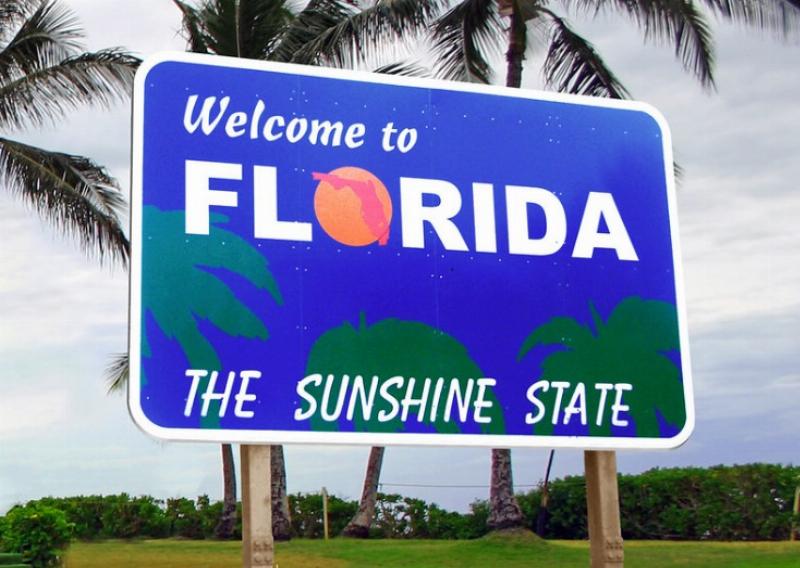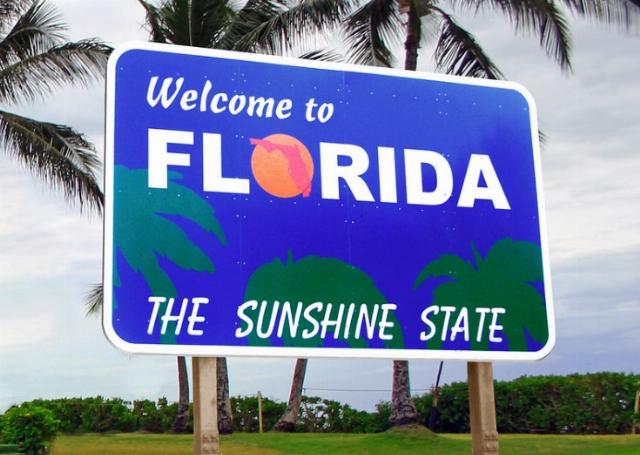


They say states are the laboratories of democracy. If so, Florida and New York are running vastly different experiments -- and the results could not be more instructive.
In the now current fiscal year, New York passed a $237 billion state budget, while Florida passed a budget less than half the size at $116.5 billion -- even though Florida now has millions more residents than New York (U.S. Census, 2024). This is not about population. It is about two distinct philosophies.
A glimpse of where one of these philosophies leads emerged recently in New York City, where Democratic Socialist Zohran Mamdani won the Democratic mayoral nomination. Mamdani openly advocates for government acquisition of private property to be redistributed as public housing -- policies far beyond traditional liberalism and cutting sharply toward classic Communist doctrine. His victory was not driven by mass support. Just 7% of eligible voters participated in the primary, with turnout under 18% among younger voters. In such an apathetic climate, it does not take a majority to win -- only an organized minority.
Florida has lowered its budget in consecutive years while absorbing record population growth. New York continues to spend more, tax more, and -- especially in education -- get less. These are not abstractions. They are measurable outcomes with real‑world implications, particularly for families, taxpayers, and students.
The Education Divide
The most consistent national measurement for K–12 outcomes is the NAEP -- the National Assessment of Educational Progress. Here, the contrast is glaring.
Florida, which now spends $9,130 per student, consistently scores above the national average on 4th and 8th grade reading and math. New York, which spends $29,893 per student, ranks around 46th in 8th grade reading and below average in most other categories.
Even more striking: New York’s per-student spending rose by about 50% between 2012 and 2022, reaching nearly twice the national average, while its NAEP scores have barely moved. Florida’s scores, meanwhile, have steadily climbed. In fact, from 2003 to 2022, Florida improved its average composite score more than any large state in the country.
Why New York Says It Must Spend More
New York’s education establishment offers familiar defenses: its student population has greater “needs,” from English‑language learners to special education and poverty. These challenges, they argue, require more support.
Yet the data suggest otherwise. Florida and New York have similar poverty rates -- about 12.3% in Florida and 14.2% in New York (U.S. Census, 2023). Both have around 10% English‑language learners in their public schools. These demographic similarities demolish the argument that New York is spending more because it faces unique obstacles.
 New York public school teacher earns $90,222 -- the highest in the nation. Florida’s average is around $55,000. And that only addresses teachers. Administrative “support services” in New York run about $8,700 per student -- nearly double the national average.
New York public school teacher earns $90,222 -- the highest in the nation. Florida’s average is around $55,000. And that only addresses teachers. Administrative “support services” in New York run about $8,700 per student -- nearly double the national average.
Florida has kept its administrative footprint lean, partly through executive initiatives like DOGE (Department of Government Efficiency), launched in 2025 to audit state and local operations. So far, it has saved over $3.5 billion and identified more than 700 redundant positions for elimination.
Higher Education: ROI or Bureaucratic Bloat?
The contrast continues at the university level. Florida’s flagship, the University of Florida, ranks in the top five public universities nationally and is first in the U.S. for income mobility -- delivering the largest earnings boost to its graduates relative to family income.
By contrast, New York’s SUNY system, though massive, does not crack the top 20 public university rankings. SUNY emphasizes “accessibility programs” like ASAP and ACE, which aim to increase graduation rates through subsidies, tutoring, and free transit. While these improve retention, they tend to produce degrees in lower‑return fields -- especially liberal arts, education, and social work.
These programs do not match UF’s outcomes in law, business, journalism, engineering, or medicine. SUNY spends three times more per student, employs as much as eight times more staff per student (four students per admin), and produces fewer high‑earning professionals. In a value‑for‑dollar comparison, it is not close.
Why Do New Yorkers Tolerate It?
Yet for all this dysfunction, one mystery lingers: Why do New Yorkers tolerate it? Most Americans think of New Yorkers as prideful. Why did you let this happen?
The contrast with Florida could not be sharper. In Florida, voters have backed cost‑cutting reforms, ousted entrenched officials, and demanded better outcomes. In New York, by contrast, a culture of civic apathy and inevitability seems to enable the very dysfunction that burdens its taxpayers.
Case in point: the recent Democratic primary for New York City mayor saw Democratic Socialist Zohran Mamdani emerge as the nominee -- despite his advocating policies that challenge the very foundations of a free society.
This was not because New Yorkers have suddenly embraced socialism. It was because they didn’t show up. Turnout in NYC primaries routinely hover below 30 percent. “We get the government we deserve.”
New York’s political class is also remarkably uniform in background. From the governor to the city council, most officials are career politicians -- individuals who rose through public-sector ladders, party machines, or government unions, and got rich, somehow. In Florida, by contrast, many state leaders come from outside politics -- business owners, veterans, reform‑minded educators -- people who entered public service not to grow government but to challenge it.
This difference in who governs may explain a great deal about how they govern.
A Case Study in Federalism
Florida’s model is not perfect, and New York’s is not beyond redemption. But the contrast is so pronounced that it deserves national attention.
This is exactly what the Founders envisioned when they framed the states as laboratories of democracy. Let each try its experiment. Let each be tested by results. And let other states -- and citizens -- draw conclusions.
Florida, in this case, has shown that a leaner, outcome‑focused approach to education and governance can succeed, even with a large and diverse population. It has absorbed a booming population, cut its state budget, and still improved outcomes -- especially in career-focused higher education.
New York, for all its pedigree, has become a cautionary tale -- a system that confuses spending with service, bureaucracy with compassion, and degrees with outcomes.
The question is no longer just why Florida does so well, though that is the needed case study. It is why New York does not pick up on it, or worse, does not know.
Even Governor Ron DeSantis has joined the fun -- joking that a small entry tax on new residents from Blue states might be enough to pay off the state’s remaining 50% of debt he has not already extinguished. Some, like California transplant to Florida and famous podcaster/pundit Dave Rubin, have said they’d gladly pay it.
He is not alone in the sentiment. They are lining up.
Rick McDowell is a writer of political philosophy, American history, and essays on the mind. His other thoughts can be found at https://americanperspective.today.
Image: DonkeyHotey
